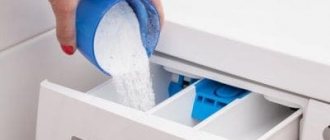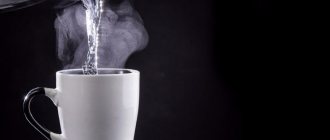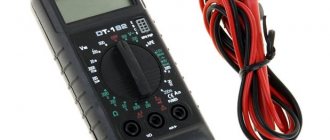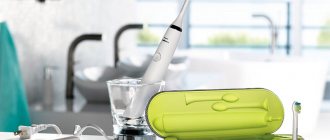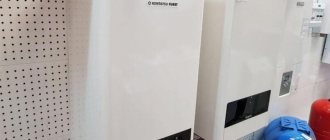Nebulizer and inhaler - what's the difference?
An inhaler is a medical device that requires the patient to inhale medications. Therefore, any nebulizer is an inhaler, but not every inhaler can be called a nebulizer.
All equipment of this type can be divided into two categories - nebulizer and steam. They differ in the form of the medicine given. A steam inhaler simply heats and vaporizes liquid medication. A nebulizer produces a fine aerosol from the medicine. In practice the difference is as follows:
- the aerosol delivers the medicine in a larger volume, and therefore its use is more effective and economical;
- a nebulizer is better suited for the treatment of diseases of the middle and lower respiratory tract, because small aerosol particles are able to penetrate deeper than steam;
- a steam inhaler is suitable for aromatherapy, but a nebulizer is not;
- The nebulizer does not heat the medicine, so it is safer and suitable even for infants.
Types of nebulizers
The nebulizer as a technology was invented back in 1858. This device used a hand pump to turn the medicine into an aerosol - you can imagine how labor intensive it was to use. But since then, the nebulizer has undergone many changes and improvements. Now all nebulizers are divided according to the method of aerosol delivery into:
- ultrasonic. To transform the medicine, a piezoelectric crystal is used, the vibrations of which create a geyser. It is he who turns the medicine into an aerosol;
- compressor Such devices use pressurized air flow, creating compression, under which the medicine breaks down into tiny particles and becomes an aerosol;
- electron mesh (MESH). Due to the novelty of the technology, a variety of names may appear: membrane nebulizers, electronic nebulizers, vibrating sieve nebulizers. The very word “mesh” (eng. mesh - “sieve hole”) can suggest the operating principle of these devices. They use a vibrating membrane covered with multiple small holes - it resembles a sieve.
Today, MESH nebulizers are considered the best for several reasons:
- they are capable of producing the finest aerosol;
- they have a compact and lightweight body - slightly larger than conventional disposable inhalers such as Ventolin. This allows you to carry out procedures not only at home, but also at work, study, and travel;
- aerosol generation occurs much faster due to the size of the holes in the membrane;
- MESH can be used in any position (even lying down), unlike other nebulizers, which stop producing aerosol when tilted.
But they are also imperfect. The main disadvantage of MESHes is their fragility. These devices actually break down more often than other nebulizers, so when purchasing, you should pay attention to the availability of service support.
Even a child can handle the MESH nebulizer
How to choose a nebulizer for your child?
So, you have decided to buy this miracle device with an exotic name - a nebulizer for your child.
- How to make the right choice and not make a mistake?
- What should a children's inhaler be like?
Today, there are ultrasonic and compressor nebulizers for home use.
The operating principle of an ultrasonic inhaler is to produce an aerosol due to the energy of high-frequency vibration of a piezocrystal. In this case, an aerosol is formed from the drug and liquid with particle sizes from 2 to 50 microns. Ultrasonic aerosol production (compared to a compressor system) is quite quiet and fast. But at the same time, ultrasonic nebulizers have a number of much more significant disadvantages compared to compressor nebulizers.
Features that limit the use of ultrasonic inhalers are the following:
- they “work” only with aqueous solutions, which limits the possibility of oil inhalations;
- they are ineffective when inhaled suspensions (for example, Pulmicort, a drug for relieving attacks of bronchial asthma);
- as a rule, ultrasonic inhalers have a large residual volume, which increases the wastage of the drug;
- the use of ultrasound leads to heating of solutions of a number of medicines, and this destroys the active substance of the inhaled medicine (antibiotics, anti-inflammatory drugs, antiseptics, etc. die);
- the price of ultrasonic inhalers is high and their maintenance also requires significant material costs.
However, the creation of an aerosol without the listed negative consequences is possible when using the energy of compressed air. It is this principle of creating an aerosol that underlies the operation of the compressor nebulizer, which is so popular today.
The compressor nebulizer is based on Bernoulli's principle (1732) and can be represented as follows:
- The air supplied by the compressor to the nebulizer chamber passes through a narrow Venturi opening. At the exit from this hole, the pressure drops sharply, which leads to liquid being sucked into it. The latter, in turn, colliding with the air flow is broken into small particles (“primary” aerosol). Subsequently, these particles collide with the damper and break up into smaller particles. Thus, a “secondary” aerosol with particle sizes from 0.5 to 10 microns is formed.
- There are three main types of compressor nebulizers
Thus, a compressor nebulizer is suitable for inhalation of suspensions and oil solutions; it does not heat drugs and, accordingly, does not destroy medicinal substances.
The wide range of medications used and the optimal method of drug delivery with a minimum number of side effects make the compressor nebulizer an indispensable assistant for your child and the whole family.
It is worth checking in advance about the configuration of the device. An oral mouthpiece is optimal for delivering the drug to the lungs. It is believed that most children cannot learn to use a mouthpiece correctly until after they reach 5 years of age. Therefore, when choosing a nebulizer for a child or a weakened adult patient, the required package should include a child or adult mask.
When assessing the technical characteristics of a nebulizer, pay attention to the average particle size of the aerosol produced by this device. This parameter is designated as MMAD, and in the API system MMAD should not exceed 2.0 microns. The air flow rate must be at least 4 l/min. Unfortunately, no one is immune from errors in using a nebulizer, so when purchasing, be sure to check with the seller about the availability of a service center for this device.
Since it is the compressor nebulizer that allows you to administer medications into the body in the most physiological and effective way, especially for respiratory diseases, having such a device at home will allow you to quickly and efficiently cope with various diseases (including acute respiratory viral infections), and significantly improve your health not only Your child, but also the whole family.
Considering all of the above, the optimal choice of nebulizer for your child is the Microlife NEB 400 model. This device meets all the requirements for a “home” nebulizer.
When choosing a nebulizer, you must always consult with your doctor in order to take into account the specifics of using nebulizer therapy for each specific case of the disease.
Indications and contraindications
Indications and contraindications are the same for all types of nebulizers.
Indications for use include:
- runny nose;
- swelling of the nasopharynx;
- acute respiratory infections;
- ARVI;
- pharyngitis;
- tracheitis;
- laryngitis;
- bronchitis;
- asthma;
- pneumonia;
- allergic reactions of the body, which are accompanied by a runny nose, sneezing, sore throat and cough.
Among the contraindications:
- pulmonary hemorrhage;
- cerebral type atherosclerosis;
- recovery period after a stroke;
- respiratory and heart failure;
- high blood pressure;
- recurrent pneumothorax.
Patient age
Nebulizer therapy, unlike a steam inhaler, can be performed even on newborns. However, doctors recommend conducting such sessions under the supervision of a specialist in a hospital. This precaution will protect the child from an allergic reaction that may occur during treatment. For children over three years old, nebulizer inhalations can be performed at home, independently. However, when choosing medications, you should listen to your doctor and not choose medications to which the response has not yet been determined.
Temperature
Nebulizers (including MESH) can be used at any body temperature. The restriction on procedures during hyperthermia applies only to steam inhalers. Nebulizers produce an aerosol that does not affect body temperature in any way.
Choice of medicine
A nebulizer, unlike a steam inhaler, only works well with certain medications that are created specifically for this purpose. Preparations for nebulizer inhalation must have the appropriate mark on the packaging and in the instructions. Such medicines can be produced both in regular bottles and in nebulas - individual capsules, the volume of which is selected specifically for one inhalation session.
Since nebulizers are intended for the treatment of the respiratory tract, the types of drugs compatible with them belong to the section of pulmonology:
- expectorants (mucolytics);
- bronchodilators;
- antihistamines and cromones (antiallergic);
- various antibiotics;
- decongestants (decongestants).
If you plan to use the nebulizer for prevention, as well as to relieve dryness from the mucous membranes (for example, due to allergies), you can use ordinary sterile saline solution.
A nebulizer, unlike a steam inhaler, only works well with certain medications that are created specifically for this purpose.
What should not be put into a nebulizer?
Any medical device can cause a lot of harm if used for other purposes. MESH nebulizers are no exception. You can only fill them with drugs that are labeled accordingly. However, due to confusion in terminology, many people try to use a nebulizer with liquids that are suitable for steam inhalers.
Let's dot the i's - never pour into a nebulizer:
- any oil preparations. Steam inhalers work well with essential oils, but nebulizers won't work as well. In an attempt to make an aerosol from oil, the device will become clogged and stop working (and the warranty on it will also expire). And if the patient inhales such a solution, his lungs will quickly fill with oil. This will lead to severe oil pneumonia;
It is absolutely forbidden to use oils in nebulizers, as this can lead to oil pneumonia and ruin the device. - non-sterile preparations. This includes regular tap water and all non-medicinal products, as well as drugs that have expired. The logic here is simple - the nebulizer delivers the medicine directly to the lungs, and some models - to the alveoli. This can be compared to giving an injection - you wouldn’t inject something dirty and unsterile under your skin, would you? Experts also do not recommend using mineral water, but the reaction to it is very individual. We do not recommend using Borjomi and similar products without consulting a doctor;
- products to which the presence of an allergy has not yet been determined. Let's remember the main advantage of nebulizers - fast and effective delivery of medicine to the body. This, unfortunately, is not only a plus, but also a minus. An allergic reaction to a drug administered in this way will also be faster and more severe than when taken orally.
A general and universal recommendation for choosing nebulizer products is to listen to your doctor and follow his instructions.
MESH nebulizer is a breakthrough in inhalation therapy.
Print page
MESH nebulizers (mesh nebulizers) rightfully belong to a new generation of highly effective devices for inhalation therapy. Their work is based on a new principle: a liquid medicinal solution is pushed through a vibrating plate (membrane) with many microscopic holes, resulting in the formation of an aerosol.
Mesh nebulizers are silent, pocket-sized inhalers that are light in weight. Miniature devices masterfully cope with their work - quickly deliver a medicinal solution consisting of microscopic particles to the deepest parts of the respiratory system. They distribute the medicine throughout all parts of the respiratory tract - both upper and lower - and make it possible to successfully treat absolutely all diseases of the respiratory system (from asthma and obstructive bronchitis to ARVI). Moreover, the ability to quickly and effectively carry out inhalation even in infants is unparalleled today. The child can even sleep, and the nebulizer will do its job professionally. It is also worth noting the maximum ease of use: the devices operate on both batteries and an AC adapter. With a MESH nebulizer, you are not tied to the place of inhalation and can carry out treatment on the road, take it on vacation and business trips. What is the advantage of mesh technology compared to ultrasonic (US) nebulizers? In MESH nebulizers, the vibration energy of the piezocrystal is directed directly to the vibrating element, while in ultrasonic nebulizers it is directed to the solution itself. Thanks to mesh technology, there is no heating of the solution with the medicinal substance and, as a result, its destruction due to the direct influence of ultrasound (physical influence). This advantage is very important, for example, for asthmatics, since the hormonal medications they take can be destroyed by ultrasound. In high-tech mesh devices, you can even use those drugs that are contraindicated for use in ultrasound. Moreover, mesh technology allows for much more economical use of medicines, as it is characterized by the smallest residual volume of medicine. What types of MESH nebulizers are there? Today, there are 2 types of membrane nebulizers: with “active” membrane vibration and with “passive” vibration.
For example, the principle of “active” membrane vibration is implemented in the Prolife NA1 mesh inhaler model. In this case, the membrane itself is directly subjected to vibration from the piezoelectric crystal. In this case, the pores in the membrane have a conical shape (where the widest part is in contact with the drug solution). The active system is more modern, on the one hand, and simpler, on the other hand. This reduces the risk of contamination and makes cleaning the device much easier. Modern research shows that MESH nebulizers and professional compressor inhalers have the greatest therapeutic effect. Both the first and second types of nebulizers are equal in terms of an important indicator - pulmonary deposition (deposition of the drug in the respiratory tract). However, the mesh nebulizer allows you to make inhalation absolutely silently, at any time and anywhere. Even a baby will breathe the healing aerosol and sleep peacefully. With this device, you do not need to think about a place to store it, and the weight of 110 g allows even a small child to hold it in his hand without effort. And the most important thing is that with mesh technology you will always be sure that the structure of the drug is not compromised and any family member receives highly effective and high-quality treatment. Be healthy!
MESH nebulizer nozzles
The device comes with attachments that are necessary for inhalation. Among MESH nebulizers, the most common models are those with a mouthpiece attachment (they are often called mouthpieces).
The mouthpiece is a regular tube that the patient has to wrap his lips around
You can also find:
- adult and children's mask. They are used for more comfortable inhalations, as well as in cases where the patient is not able to wrap his mouth around the mouthpiece. They differ from each other only in size;
- infant mask. It is impossible to force a baby to wrap his lips around the mouthpiece, so for the smallest patients, separate masks are made that fit them in size;
- nasal attachment (cannula). It consists of two thin tubes connected by a common base. This attachment is used to treat nasal diseases, as well as eliminate dry mucous membranes.
The cannulas are usually the same size, so children may find them uncomfortable to use - in this case, use a mask
What is a mesh nebulizer:
Nebulizer, translated from Latin, means cloud or fog, which explains the principle of operation of a nebulizer, based on an ultra-small, dispersed spray of a medicinal aerosol. The first analogue of modern inhalers appeared in France in 1858; it had a manually driven pumping system and low atomization quality, but this device gave rise to inhalation therapy in general. Mesh nebulizers
, due to their small dimensions, allow asthmatics and people with difficulty breathing to carry out inhalations on their own or provide quick medical assistance in case of an allergic reaction, when a person can suffocate in a matter of minutes while outside a hospital setting.
How to inhale with a MESH nebulizer
In addition to the nebulizer itself, you will need:
- sterile syringe (possibly without a needle);
- medicine;
- batteries for powering the nebulizer.
Regardless of the disease, the general principle of using a MESH nebulizer is as follows:
- Install batteries and wash your hands.
- Remove the nebulizer cap that blocks access to the medication reservoir.
- Use a syringe to draw up the required dosage of medication. Your doctor will advise you on the correct dose.
- Pour the medicine into the reservoir with a syringe.
- Close the lid.
- Install the desired attachment (mouthpiece, nasal cannula or mask). The mounting method depends on the nebulizer model, but most often an adapter is included. To avoid mistakes, check the instructions on how to properly assemble the nebulizer.
- Place the nozzle on the patient's face. The mouthpiece must be tightly wrapped around your lips, and the mask must be pressed no less tightly to your face. A mask attachment is usually used if the patient cannot close the mouthpiece independently. The nasal cannula is inserted into the nostril, but not too deep. The patient should not feel pain.
- The procedure is carried out until the medicinal solution runs out. This usually takes about 5–10 minutes.
Video: inhalation with MESH nebulizer
Features of inhalation for various diseases
The nebulizer is capable of delivering medicine right up to the alveoli of the lungs. However, such depth is not always necessary. Proper breathing, setting the desired particle size and a suitable nozzle will help make inhalation more targeted:
- to treat the lower respiratory tract (for example, with pneumonia or bronchitis), breathe deeply and slowly through the mouth. If possible, you should hold your breath for a couple of seconds after inhaling so that the medicine has time to be better absorbed. The attachments used are a mouthpiece or a mask. The particle size (if the inhaler allows you to adjust it) is set to a minimum;
- the middle section (ARVI and acute respiratory infections, tonsillitis, pharyngitis) is treated with calm breathing without holding. As in the previous case, breathing is done through the mouth, and a mouthpiece or mask is used as a nozzle. Particle size - medium;
- The upper respiratory tract (rhinitis, sinusitis, sinusitis) is treated by wearing a nasal cannula or mask. Inhale through the nose, exhale through the mouth. You need to breathe at a normal pace, without slowing down or holding your breath. Particle size is maximum.
Useful tips
Nebulizer inhalation is an absolutely painless procedure, and the MESH nebulizer can make it also comfortable. You can spend a session lying on your bed, watching your favorite movie. However, problems may arise when trying to inhale a child. To prevent the procedure from frightening your baby, try:
- distract him, for example, by showing a cartoon or reading a fairy tale. You can bring a toy while acting out a scene;
- choose the least noisy nebulizer. MESH nebulizers are capable of producing noise up to 60 dB - such a sound can frighten a child. If possible, choose models with a noise level of 40 dB or lower;
- Do not perform the procedure when the child is nervous, capricious, or actively rejects the device. Most likely, it will not be possible to calm him down, and shallow and frequent breathing during inhalation will reduce its benefits to a minimum;
- Carry out the procedure while the little patient is sleeping. This method is especially suitable for children under 3 years of age. Simply place the mask on your child's face, being careful not to wake him up. During sleep, breathing is deep and calm, so the procedure will be effective.
When I was little, my mother would sit me next to my father, who would start telling interesting stories. I listened and didn’t even notice how the inhalation took place.
mesh nebulizer reviews
I live in Russia, and even in the capital. Knowing the level of our medicine and how doctors in Moscow treat me, I worry about people in other cities of Russia, but I hope you have better luck with doctors than I do. And I wanted to share my stories and information with you. Maybe it will be useful to someone. I’m not a little girl anymore, and I can read, and I have the Internet, and I’ve seen different doctors, and therefore I know my exact diagnosis, and one doctor somehow guessed it (although the next day another doctor refuted it and made his own diagnosis). In short, against the background of allergies, as a result of untimely and ineffective treatment of the acute process, I developed chronic laryngotracheitis. Starts with a scratching in the throat and
pain when swallowing. After some time, it seems that a large wound has appeared in the throat and the pain is concentrated there. Lymph nodes enlarge. Pain in the ear, shooting. Periodic coughing attacks. The voice changes, it becomes more and more hoarse and disappears completely (complete silence sets in, to the joy of everyone in the family). Difficulty breathing with shortness of breath, which causes pain in the chest - back, chest. All this causes a very nasty increase in temperature - up to 37-37.2 degrees. And this state continues for 7-10 days. You feel like a fish who forgot to turn on the compressor.
It is very difficult for a healthy person to understand what state you are in, when there is not enough air and how difficult it is to endure all this. Among my circle (Thank God!) there are no such people. But from the side of our loved ones there is a silent question, well, when will you start washing us again, ironing us, washing everything around us?... Again, no strength?... And after reading the sites, it turns out there are a lot of people like me and also like me in search of a solution to this problem.
How I treat it: bed rest (I’m usually so weak that I don’t want to get up again), exclude cold, hot, salty and spicy foods, drink a lot of warm water, antibiotics, take antihistamines - my body liked Zyrtec, I relieve tracheal swelling with an inhaler , I rinse every hour with Furacilin (relieves pain), mucolytic - I liked Ascoril, it coats the throat and gently thins phlegm.
DON'T FORGET TO CONSULT YOUR DOCTOR!
I encounter this warning everywhere. Only there is still a mandatory addition to the word “doctor”: attentive, competent, highly professional, highly qualified! And two days ago I read about nebulizers and wanted to ask the doctor, consult what medications to add to this wonderful device, and take sick leave (I’ve been sick for 6 days, I have no voice, it’s hard to breathe). So, in the clinic on Alekseevskaya there works this “wonderful” pensioner with poor eyesight, the head of the otolaryngology department. Listening to my whisper, she asked questions, examined me and performed strange manipulations (she grabbed my tongue and demanded that I say: aaaand......), and found nothing. She was very upset when I responded negatively to her malicious comments: “Do you smoke? Did you sing drunk songs on New Year's Eve? Do you talk a lot? I was offended and concluded that I was nervous a lot and my voice was gone, and my ear hurt because the nerve was blown out. She prescribed valerian and sent me to a therapist, maybe she will find something. Kindergarten....., no, nursing home on site at our clinics.
So, yesterday they brought me a u22 nebulizer. Through trial and error, I mastered it in half a day and by the evening I could easily take it apart and wash it. Two times 15 minutes of physical exercise. I breathed in the solution (my daughter saw it and promised to tell dad that I started smoking). The second time before bed...., and for the first time in 8 nights I fell asleep peacefully. And I never woke up at night.
Today I noticed that after the procedure there was no shortness of breath for 4-5 hours.
About the nebulizer.
Yes......, thinking about what details to write to you, I opened sites with characteristics. Those who write about the device on websites have not even held the device in their hands. They write: 1) “Inhalation can be carried out in any position of the device” - nonsense, you tilt your head forward and it stops working, tilt it only towards the button; 2) “Does not spill inhalation liquid” - a little spills when condensation accumulates, and when liquid from condensation accumulates on the membrane, the spraying process stops. And so on. The battery compartment does not open on its own, you need to pry it a little, be careful. I was immediately upset, I thought it was a marriage. All other parts are easily connected and vice versa. Before using it, I watched a lot of videos and read information. It was scary to pick it up. A lot of details. In one of the videos, the guy was poorly prepared (he advertises Russian in Russian GTI) and pulled out the housing with the membrane so cruelly that it’s better not to watch this video. All parts are easy to detach and snap into place, made in Japan. It runs on two batteries, I’ll write about how long it lasts and which company it is from later. The AC adapter is purchased separately, I have not needed it yet. The adapter in our pharmacy costs about 900 rubles.
The kit includes two masks, crooked, of terrible quality (slipped in Russia). In principle, you can use it, but not much gets into your mouth and they didn’t think through the fastening, I almost dropped the device on the floor. You won’t be able to walk with him, much less a child. Experiment on the bed. On the websites they offer to buy an additional mask (the one that was taken out of the kit), I don’t know whether it’s worth buying.
The mouthpiece is attached securely, nice soft polymer material, only short, but not a drawback. You can buy a longer mouthpiece, inexpensively.
And about some rules for using a nebulizer:
1. Use sterile saline solution as a solvent (I bought it in ampoules), to fill the inhalation solution - sterile needles and syringes (1 syringe is enough for 5 days, in the guidelines for the production of sterile solutions in pharmacies approved by the Ministry of Health and Medical Industry of the Russian Federation dated August 24, 1994 g., after sterilization (in our case, opening), store for 30 days in a place protected from light, according to the instructions, store at a temperature from +18 C to +25 ° C).
2. It is recommended to use the nebulizer filling volume 6-7ml;
3. During the procedure, there may be an accumulation of an excessive amount of drug on the membrane and the spraying process may stop. In this case, turn off the power of the device and remove the mask adapter. Remove excess medication. Simply turn the mesh sprayer over to remove moisture from the mesh membrane.
4. After inhalation, rinse all parts except the Hardware unit in a bowl with warm, filtered, boiled water. Frequent washing is necessary to prevent drug crystallization and bacterial contamination. Do not touch the membrane; it is a very delicate element in the device. If it fails, you can only replace it; its cost is more than 2000 rubles.
Rules for inhalation
1. Inhalations should be taken no earlier than 1-1.5 hours after meals, and you should not be distracted by conversation. After inhalation, it is not recommended to talk, eat, or go outside for 1 hour (in cool weather).
2. For diseases of the upper respiratory tract (nose, paranasal sinuses and nasopharynx), inhalation and exhalation must be done through the nose using a mask. Breathe calmly, without tension.
3. For diseases of the middle respiratory tract (throat, larynx), inhalation and exhalation should be done through the mouth using a mask. You should breathe calmly as usual
4. For diseases of the trachea, bronchi, and lungs, it is recommended to inhale the aerosol through the mouth using a mouthpiece. Breathe deeply and evenly.
5. Most solutions for inhalation are prepared using saline 0.9% sodium chloride (NaCl) as a solvent and humectant. The original drug is diluted with saline in certain proportions.
6. When prescribing several drugs simultaneously, the order should be observed. A bronchodilator is inhaled first, after 15-20 minutes a sputum thinner and remover is inhaled, then, after sputum is discharged, an antibiotic or anti-inflammatory drug is inhaled.
7. The course of treatment depends on the complexity of the disease and the drug used (from 5 to 10 days)
8. Although nebulizer therapy does not apply to thermal physiotherapeutic procedures, it is nevertheless not recommended to carry out inhalations at elevated body temperatures
9. It is prohibited to use oil preparations in the nebulizer. Various oils are used to treat diseases only of the upper respiratory tract, for which exposure to coarse particles is sufficient, therefore steam inhalers are used for inhalation of oils. The nebulizer produces fine particles. When using oil solutions, fine particles of oil enter the lungs, and this significantly increases the risk of developing so-called oil pneumonia. Also, the use of essential oils in nebulizers increases the risk of allergies due to the high concentration of active substances in the lungs.
10. Medicines such as Eufillin, Papaverine, Diphenhydramine and the like cannot be used in nebulizers, since they do not have “points of application” on the mucous membrane.
And in conclusion. Let's be optimistic, I believe that the quality of treatment will improve soon. I’m glad that now you can choose and make an appointment with any doctor. This past year, already last year, I found a very good dentist on the Internet based on reviews.
Care of the MESH nebulizer
The importance of sterility of drugs has already been described above. But what about the nebulizer itself? Its main parts are hidden from view, so you don’t have to worry about their safety. But the nozzles should be cleaned regularly:
- Wash your hands.
- After each inhalation, the device must be disassembled according to the instructions. In most cases, only the adapter and the attachment can be separated.
Separate the parts following the instructions - Set the main body aside. Place the nozzle and adapter under a stream of warm, almost hot water. Rub it with your hands, paying particular attention to the corner joints and edges of the parts.
The main body must not be wet under any circumstances. - Lay the pieces out on a clean towel and let them dry.
After all parts have been cleaned and dried, you can put the nebulizer in a box or storage case. MESH nebulizers are usually supplied with a convenient bag - the device should be stored in it, protecting it from dust and dirt.
Mesh nebulizer Little Doctor LD-207U
The compact mesh nebulizer Little Doctor LD-207U, despite its modest functionality, has a number of advantages, such as: inhalation at an angle of 45 degrees, the ability to work both from mains and batteries, and a wide range of drugs used. The Little Doctor LD-207U nebulizer mesh kit includes masks for adults and children, as well as a mouthpiece for inhalation. The device has a membrane cleaning solution, which allows you to more effectively remove residual medicinal solution. The device has a one-year manufacturer's warranty, a declaration of conformity with established standards and a registration certificate.
Service maintenance
MESH nebulizers usually cost more than 5 thousand rubles, so it can be annoying to throw away such a device after the first breakdown. But such medical equipment is covered by a manufacturer’s warranty, which allows you to contact a store or service center if a malfunction is detected. There, employees will be able to either replace the defective device with a new one, or replace parts of the old one.
In MESH nebulizers, the membrane most often fails. In most cases, this is subject to warranty repair, but there are exceptions:
- if you used the nebulizer not according to the instructions;
- if you put something into it other than the recommended medications;
- if there are scratches, chips or other damage on the case that indicate that the nebulizer was dropped.
Spare parts
The nebulizer nozzles are the “dirtiest” part of them, which also comes into most contact with the patient. They should be changed regularly - buy a new one at least once every six months. Large manufacturers (B-Well, AND, AGU and others) have established the production of spare nozzles, so they can be easily found in pharmacies. They are inexpensive - about 100–200 rubles for a package of several parts. Other parts of MESH nebulizers cannot be replaced independently.
The best MESH nebulizers
Check out the most popular models that have received the approval of doctors and recognition from buyers.
Little Doctor LD-207U
Little Doctor LD-207U is a relatively inexpensive (from 3,500 rubles) nebulizer with an average particle size of 5 microns. The device is suitable for inhalation for any type of respiratory tract disease - the fine aerosol penetrates perfectly into the lungs. The device comes with three attachments: a mouthpiece, a child mask and an adult mask. There are no masks included for infants. This nebulizer has a mains mode. True, there is no network adapter included. It’s easier to buy batteries (two AA AA batteries are required to power this MESH).
Among the disadvantages, it is worth noting fragility (which, however, is inherent in all MESH nebulizers) and the lack of a particle size regulator. Compared to other electronic mesh inhalers, Little Doctor can be called noisier (58 dB).
The device's configuration is sufficient for most situations
We have been using it for 2 years (two children), it is an irreplaceable thing. You just need to properly care for the device. Rinse immediately and carefully wipe the membrane and all parts with a cotton swab.
Olga Marochkina
https://market.yandex.ru/product–mesh-ingaliator-nebulaizer-little-doctor-ld-207u/1731084773/reviews?track=tabs
I took it from the pharmacy on the advice of the seller and regretted a hundred times that I was throwing money away. It works intermittently, to disassemble, fill and reassemble, you have to puff. The groove barely fits into the groove, the plastic is solid, everything is done like an ax. the only plus is a bunch of masks and mouthpieces, which, however, does not save this device.
Nikita S
https://market.yandex.ru/product–mesh-ingaliator-nebulaizer-little-doctor-ld-207u/1731084773/reviews?track=tabs
Application of mesh nebulizer:
Leading domestic and foreign clinics recommend and oblige mesh nebulizer
for acute respiratory viral infections, acute allergies, chronic inflammatory processes of the respiratory tract, chronic rhinitis, chronic bronchitis, bronchial asthma, chronic broncho-obstructive pulmonary disease, cystic fibrosis, acute respiratory diseases (laryngitis, rhinitis, pharyngitis, fungal infections of the upper respiratory tract) and to prevent the effects of negative factors from an unhealthy environment.


